Luiz Velho
Back to the Future Cyclopean Stereo: a human perception approach unifying deep and geometric constraints
Feb 28, 2025Abstract:We innovate in stereo vision by explicitly providing analytical 3D surface models as viewed by a cyclopean eye model that incorporate depth discontinuities and occlusions. This geometrical foundation combined with learned stereo features allows our system to benefit from the strengths of both approaches. We also invoke a prior monocular model of surfaces to fill in occlusion regions or texture-less regions where data matching is not sufficient. Our results already are on par with the state-of-the-art purely data-driven methods and are of much better visual quality, emphasizing the importance of the 3D geometrical model to capture critical visual information. Such qualitative improvements may find applicability in virtual reality, for a better human experience, as well as in robotics, for reducing critical errors. Our approach aims to demonstrate that understanding and modeling geometrical properties of 3D surfaces is beneficial to computer vision research.
Taming the Frequency Factory of Sinusoidal Networks
Jul 30, 2024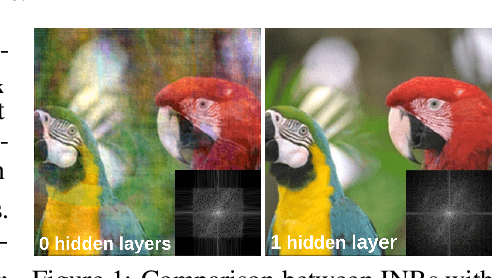
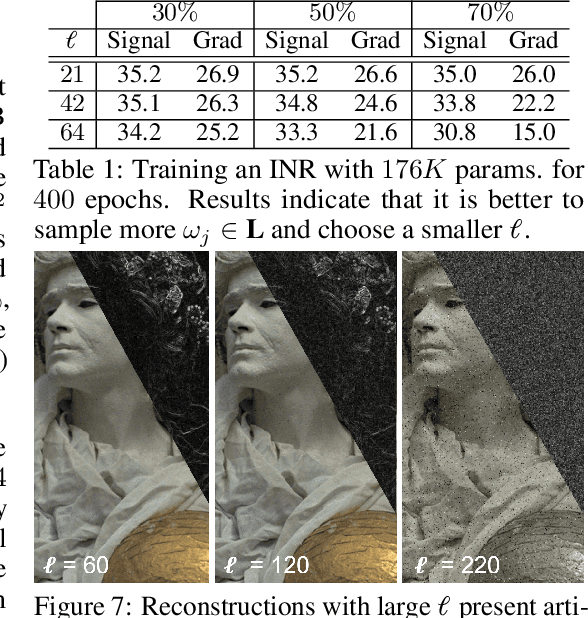
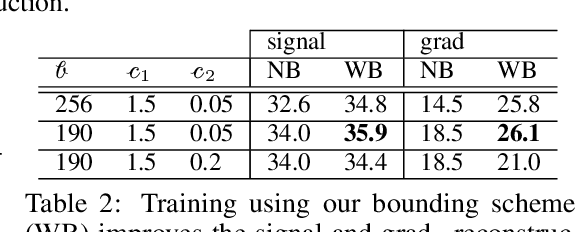

Abstract:This work investigates the structure and representation capacity of $sinusoidal$ MLPs, which have recently shown promising results in encoding low-dimensional signals. This success can be attributed to its smoothness and high representation capacity. The first allows the use of the network's derivatives during training, enabling regularization. However, defining the architecture and initializing its parameters to achieve a desired capacity remains an empirical task. This work provides theoretical and experimental results justifying the capacity property of sinusoidal MLPs and offers control mechanisms for their initialization and training. We approach this from a Fourier series perspective and link the training with the model's spectrum. Our analysis is based on a $harmonic$ expansion of the sinusoidal MLP, which says that the composition of sinusoidal layers produces a large number of new frequencies expressed as integer linear combinations of the input frequencies (weights of the input layer). We use this novel $identity$ to initialize the input neurons which work as a sampling in the signal spectrum. We also note that each hidden neuron produces the same frequencies with amplitudes completely determined by the hidden weights. Finally, we give an upper bound for these amplitudes, which results in a $bounding$ scheme for the network's spectrum during training.
Implicit Neural Representation of Tileable Material Textures
Feb 03, 2024Abstract:We explore sinusoidal neural networks to represent periodic tileable textures. Our approach leverages the Fourier series by initializing the first layer of a sinusoidal neural network with integer frequencies with a period $P$. We prove that the compositions of sinusoidal layers generate only integer frequencies with period $P$. As a result, our network learns a continuous representation of a periodic pattern, enabling direct evaluation at any spatial coordinate without the need for interpolation. To enforce the resulting pattern to be tileable, we add a regularization term, based on the Poisson equation, to the loss function. Our proposed neural implicit representation is compact and enables efficient reconstruction of high-resolution textures with high visual fidelity and sharpness across multiple levels of detail. We present applications of our approach in the domain of anti-aliased surface.
Neural Implicit Morphing of Face Images
Aug 26, 2023Abstract:Face morphing is one of the seminal problems in computer graphics, with numerous artistic and forensic applications. It is notoriously challenging due to pose, lighting, gender, and ethnicity variations. Generally, this task consists of a warping for feature alignment and a blending for a seamless transition between the warped images. We propose to leverage coordinate-based neural networks to represent such warpings and blendings of face images. During training, we exploit the smoothness and flexibility of such networks, by combining energy functionals employed in classical approaches without discretizations. Additionally, our method is time-dependent, allowing a continuous warping, and blending of the target images. During warping inference, we need both direct and inverse transformations of the time-dependent warping. The first is responsible for morphing the target image into the source image, while the inverse is used for morphing in the opposite direction. Our neural warping stores those maps in a single network due to its inversible property, dismissing the hard task of inverting them. The results of our experiments indicate that our method is competitive with both classical and data-based neural techniques under the lens of face-morphing detection approaches. Aesthetically, the resulting images present a seamless blending of diverse faces not yet usual in the literature.
Multiresolution Neural Networks for Imaging
Aug 27, 2022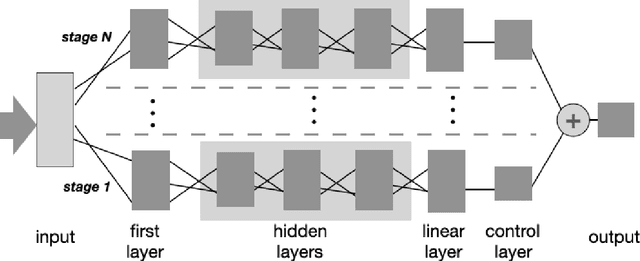

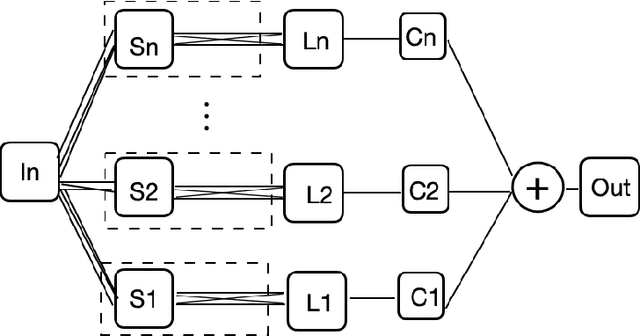
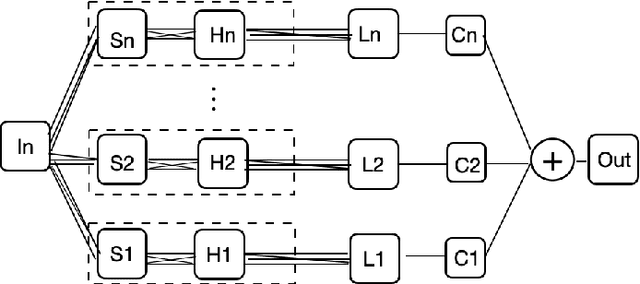
Abstract:We present MR-Net, a general architecture for multiresolution neural networks, and a framework for imaging applications based on this architecture. Our coordinate-based networks are continuous both in space and in scale as they are composed of multiple stages that progressively add finer details. Besides that, they are a compact and efficient representation. We show examples of multiresolution image representation and applications to texturemagnification, minification, and antialiasing. This document is the extended version of the paper [PNS+22]. It includes additional material that would not fit the page limitations of the conference track for publication.
Neural Implicit Surfaces in Higher Dimension
Jan 26, 2022



Abstract:This work investigates the use of neural networks admitting high-order derivatives for modeling dynamic variations of smooth implicit surfaces. For this purpose, it extends the representation of differentiable neural implicit surfaces to higher dimensions, which opens up mechanisms that allow to exploit geometric transformations in many settings, from animation and surface evolution to shape morphing and design galleries. The problem is modeled by a $k$-parameter family of surfaces $S_c$, specified as a neural network function $f : \mathbb{R}^3 \times \mathbb{R}^k \rightarrow \mathbb{R}$, where $S_c$ is the zero-level set of the implicit function $f(\cdot, c) : \mathbb{R}^3 \rightarrow \mathbb{R} $, with $c \in \mathbb{R}^k$, with variations induced by the control variable $c$. In that context, restricted to each coordinate of $\mathbb{R}^k$, the underlying representation is a neural homotopy which is the solution of a general partial differential equation.
Differential Geometry in Neural Implicits
Jan 26, 2022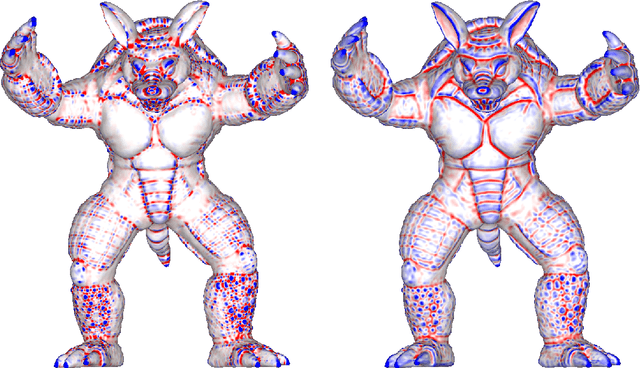
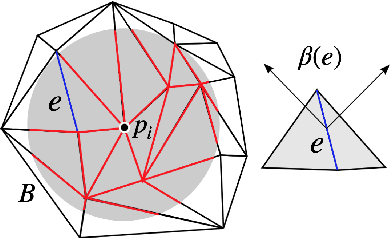

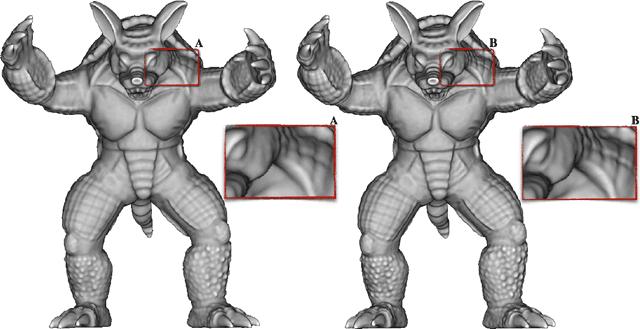
Abstract:We introduce a neural implicit framework that bridges discrete differential geometry of triangle meshes and continuous differential geometry of neural implicit surfaces. It exploits the differentiable properties of neural networks and the discrete geometry of triangle meshes to approximate them as the zero-level sets of neural implicit functions. To train a neural implicit function, we propose a loss function that allows terms with high-order derivatives, such as the alignment between the principal directions, to learn more geometric details. During training, we consider a non-uniform sampling strategy based on the discrete curvatures of the triangle mesh to access points with more geometric details. This sampling implies faster learning while preserving geometric accuracy. We present the analytical differential geometry formulas for neural surfaces, such as normal vectors and curvatures. We use them to render the surfaces using sphere tracing. Additionally, we propose a network optimization based on singular value decomposition to reduce the number of parameters.
Can We Use Neural Regularization to Solve Depth Super-Resolution?
Dec 21, 2021



Abstract:Depth maps captured with commodity sensors often require super-resolution to be used in applications. In this work we study a super-resolution approach based on a variational problem statement with Tikhonov regularization where the regularizer is parametrized with a deep neural network. This approach was previously applied successfully in photoacoustic tomography. We experimentally show that its application to depth map super-resolution is difficult, and provide suggestions about the reasons for that.
Deep Reinforcement Learning for High Level Character Control
May 20, 2020



Abstract:In this paper, we propose the use of traditional animations, heuristic behavior and reinforcement learning in the creation of intelligent characters for computational media. The traditional animation and heuristic gives artistic control over the behavior while the reinforcement learning adds generalization. The use case presented is a dog character with a high-level controller in a 3D environment which is built around the desired behaviors to be learned, such as fetching an item. As the development of the environment is the key for learning, further analysis is conducted of how to build those learning environments, the effects of environment and agent modeling choices, training procedures and generalization of the learned behavior. This analysis builds insight of the aforementioned factors and may serve as guide in the development of environments in general.
Latent-Space Laplacian Pyramids for Adversarial Representation Learning with 3D Point Clouds
Dec 13, 2019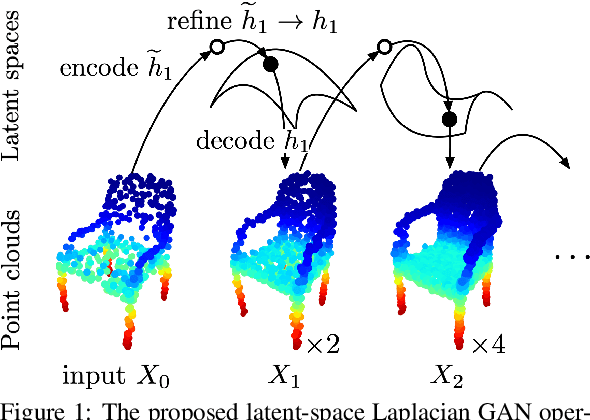
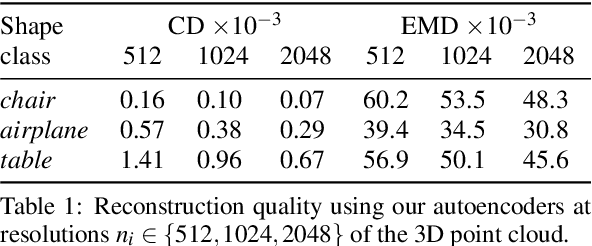

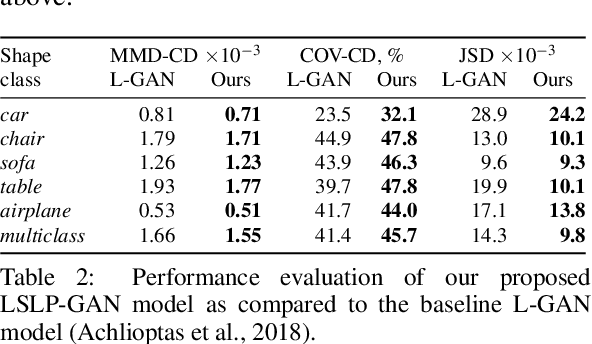
Abstract:Constructing high-quality generative models for 3D shapes is a fundamental task in computer vision with diverse applications in geometry processing, engineering, and design. Despite the recent progress in deep generative modelling, synthesis of finely detailed 3D surfaces, such as high-resolution point clouds, from scratch has not been achieved with existing approaches. In this work, we propose to employ the latent-space Laplacian pyramid representation within a hierarchical generative model for 3D point clouds. We combine the recently proposed latent-space GAN and Laplacian GAN architectures to form a multi-scale model capable of generating 3D point clouds at increasing levels of detail. Our evaluation demonstrates that our model outperforms the existing generative models for 3D point clouds.
 Add to Chrome
Add to Chrome Add to Firefox
Add to Firefox Add to Edge
Add to Edge